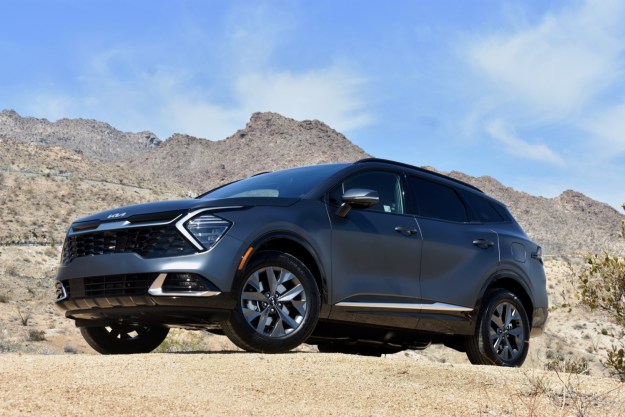You’d think with all of the effort required to design, build, and market a new car, the company that makes the final product would treat it like more than an afterthought. But the Nissan Pathfinder Hybrid has never received much attention and now, after just over a year in production, it’s dead.
The hybrid version of Nissan’s midsize crossover went on sale in October 2013 and has actually been out of production since January, Automotive News reports. Seven months later, Nissan now says the Pathfinder Hybrid won’t return for 2016.
While nonhybrid Pathfinders use a 3.5-liter V6, the Pathfinder Hybrid employed a 2.5-liter supercharged four-cylinder and a single electric motor. Together, they could send 250 horsepower and 243 pound-feet of torque to the front wheels or all four.
That didn’t produce spectacular fuel-economy gains. In EPA testing, the Pathfinder Hybrid only showed an improvement of 4 mpg combined with front-wheel drive, and 5 mpg combined with all-wheel drive, over the standard model. In the highway category, the difference was just 2 mpg.
To get that, customers had to pay around $3,000 more than a comparably equipped nonhybrid Pathfinder. For buyers looking to save money by cutting fuel costs, it was hard to justify.
The Pathfinder Hybrid gave Nissan a fuel-efficient competitor to vehicles like the Toyota Highlander Hybrid, but that’s apparently a small niche. After quietly ending production in January, Nissan has been selling leftover stock only.
While it’s sold more electric cars than any other company, Nissan has never been particularly enthusiastic about hybrids anyway. The Pathfinder Hybrid is only the second hybrid model to wear the Nissan badge in the U.S.; the first was a hybrid version of the previous-generation Altima.
Meanwhile, the Pathfinder Hybrid’s twin, the Infiniti QX60 Hybrid, will remain in showrooms in limited numbers as a 2016 model. It’s built at Nissan’s plant in Smyrna, Tennessee, but the vast majority of units are reportedly exported to China, Mexico, and other markets.
Nissan seems to feel its luxury brand is better suited to hybrids. In addition to the QX60 Hybrid, Infiniti still offers hybrid versions of its Q50 and Q70 sedans.
Editors' Recommendations
- Lamborghini’s Urus SE plug-in hybrid tries to do it all
- Tesla Model Y vs. Nissan Ariya: Can Tesla take out Nissan’s electric crossover?
- Lamborghini is reinventing itself with the Revuelto plug-in hybrid
- Why you should consider a plug-in hybrid in 2023
- Nissan wants the 2023 Ariya to be its comeback EV, but the bar has been raised


